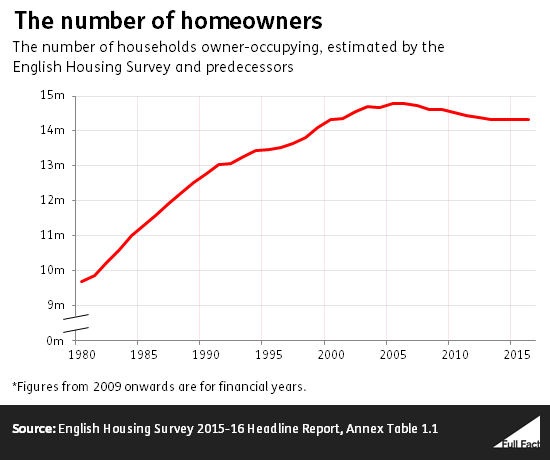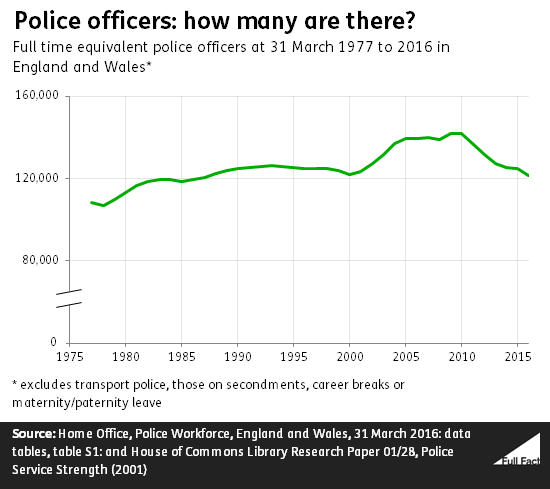Labour party manifesto launch, factchecked
We've factchecked 10 claims from Jeremy Corbyn's speech at the Labour party manifesto launch.
Labour Manifesto: Rich and Poor
“A Britain for the rich and the elite and the vested interests. They benefited from tax cuts, bumper salaries and millions have struggled at the same time.”
- When politicians talk about “the rich” you should always ask exactly who they mean, as the Institute for Fiscal Studies said recently. This is a broad claim because it’s not clear exactly which taxpayers we’re talking about. Income and wealth inequalities are even higher among the very rich than in the general population.
- Overall, the incomes of all but the richest and poorest 10% of households benefited from tax changes between 2010 and 2015, according to the IFS.
- The story changes when you add in benefits policy. The combined effect was generally either negative or neutral for all income groups.
- Generally, higher income households were hit less hard. The exception was the richest 10%. Their incomes were hit harder than the rest of the top half.
- The impact of tax and benefits policies planned or put in place since 2015 will be similar in the long term: poorer households will be hit hardest; the top half will do better than the bottom half; the richest 10% will do less well than most of the rest of the top half.
Labour Manifesto: People earning less than the living wage
“Labour will boost the wages of 5.7 million people earning less than the living wage to £10 an hour by 2020.”
- In 2016 about 5.6 million people in the UK were earning below the Living Wage Foundation living wage, according to IHS Markit’s research for KPMG using data from the Office for National Statistics. That’s about 22% of UK employees.
- The Living Wage Foundation’s (LWF) voluntary living wage is set at £9.75 an hour in London and £8.45 across the rest of the UK.
- The LWF living wage is not the same as the National Living Wage. The National Living Wage is effectively a new minimum wage for people aged 25 and over of £7.50 an hour.
- Middle-income households benefit the most from increasing the minimum wage, according to the Institute for Fiscal Studies. It says that Labour’s plans will almost triple the proportion of employees covered by a minimum wage and will raise employers’ wage costs by £14 billion per year.
Labour Manifesto: Insecure jobs
“Just look at the last seven [years of Conservative government]... More people are in work but they’re not getting the pay or the hours to make ends meet.”
- The number of people in employment in the UK is historically high, as is the proportion of people in work. At the beginning of 2017 almost 32 million people were in work and a larger proportion of working-age people had a job of some description than had ever been recorded before.
- From the statistics, it doesn’t seem like unwanted part-time work or unsatisfactory temporary work has been the major driver behind the growth in employment.
- The proportion of workers who simply can’t find permanent or full-time jobs did increase after the recession but it’s been falling for the past few years now.
- Between 1-2% of people in employment say they have a temporary job mainly because they can’t find a permanent one. About 3% of UK workers say they work part-time mainly because they can’t find a full-time job.
- The picture for specific industries, regions and groups might be different. These statistics will only ever give a limited insight into questions about job quality.
Labour Manifesto: Young people in debt
“Just look at the last seven [years of Conservative government]... more young people in debt.”
- Nearly a third of people in Great Britain aged 16 to 24 have financial debts. A similar proportion of those aged 16-34 live in households with more debts than assets.
- Those aged 16 to 24 have the highest level of debt compared with their income. Of those in debt, half report debts of 40% or more of their annual income.
- The proportion of people aged 16 to 24 who have financial debts fell slightly from 35% in 2010-12 to 32% in 2012-14—the latest figures available.
- The average debt for 16-24 year olds rose in the late noughties, but fell between 2010-12 and 2012-14.
- Mr Corbyn may have been referring to the highest value category of debt, student loans—which more young people are taking on, according to the Student Loans Company.
- At the end of the 2015-16 financial year there were 5 million people with government student loans; of these, 2.9 million had loans liable for repayment. That’s an increase of 28% and 27% respectively compared with 2012-13.
Labour Manifesto: Young people getting jobs
“Our manifesto is for you … Young people struggling to find a secure job.”
- Young people aged 16-24 are the most likely age group to be without a job while actively seeking one. Their unemployment rate is over 12%, compared to under 5% for the general population.
- That’s been changing: back in 2010 their unemployment rate was 20%, following sharp rises after the 2008 recession.
- Working out whether young people are unable to get a ‘secure job’ is harder. The figures we do have don’t always show people are struggling—in many cases people on zero hours or part time work do so by choice.
- 38% of 16-24 year olds work part time, compared to just over a quarter of the population. Many of them will be in full time education, so won’t want more hours.
- 5% of 16-24 year olds are self-employed, compared to 15% overall.
- The same age group are also the most likely to be on a zero-hours contract. One third of people on these contracts are aged 16-24 - that’s around 8% of all young people in work.
Labour Manifesto: Firefighters
“Just look at the last seven [years of Conservative government]...… fewer firefighters too.
- Fire services are devolved in the UK. When looking at only England, there were 5,800 fewer firefighters (known as ‘wholetime staff’ in the statistics) working the equivalent of full time in 2016 compared with 2010. That’s a drop of about 20%.
- Across Great Britain, the headcount of firefighters has fallen during this period in England, Wales, and Scotland. In 2010 there were 36,000 firefighters and in 2016 there were 29,000.
- But the number of incidents attended by fire services across Great Britain is also falling, from 830,000 in 2009/10 to 655,000 in 2015/16. These incidents include fires, false alarms, and non-fire incidents.
Labour Manifesto: Police Officers
“Just look at the last seven [years of Conservative government]... Fewer police on the beat.”
- The number of police officers in England and Wales fell by just under 19,000 between September 2010 and September 2016.
- This relates to the number of full time equivalent officers (or how many there would be if you added up all their hours to make full time roles).
- The number of police officers in England and Wales is around the level it was at in 2000 (that’s if we look at how many police officers there were in March last year, which lets us compare further back in time).
Labour Manifesto: Young Homeowners
“Fewer young people [are] able to buy their first home.”
- The number of young households owning their home has fallen, according to the English Housing Survey.
- Home ownership in England has been falling compared to private and social renting as a percentage of all tenures since 2003. This has been driven by a fall in the number of younger homeowners.
- The number of owner-occupiers under 65 fell by 962,000 between 2009/10 and 2015/16, predominantly among those aged 35-44. In the same period, the number of homeowners aged over 65 grew by 767,000.
- This data tells us about the age of current homeowners, not the age of first-time buyers. The average age of a first-time buyer is about 32, as it was in 2009/10 (again, this is from the English Housing Survey).

Labour Manifesto: Food banks
“Just look at the last seven [years of Conservative government]... More people queueing at food banks.”
- The number of uses of Trussell Trust food banks has gone up since 2010 from 41,000 to 1.2 million.
- These figures don’t show all food bank use: the Trussell Trust is the largest food bank network in the UK, but estimates from a few years ago suggest it may only account for half of UK food banks.
- We don’t know exactly how many individual people use them. The Trust estimates the average person using a food bank does so twice in a year, so that’s about 590,000 people in 2016/17.
- The number of food banks has also increased since 2010, so more people have access to one now. That means we can’t be sure how much of the increasing use of food banks is due to increasing demand.
Labour Manifesto: Child poverty
“Just look at the last seven [years of Conservative government]: more children living in poverty...”
- There’s been little change in child poverty levels and rates comparing 2015/16 to 2009/10, according to official data from the Department for Work and Pensions.
- There are different ways to measure child poverty in the UK. They’ll tell you that anywhere between 2.3 and 4 million children are in poverty in 2015/16, compared to between 2.5 and 3.9 million in 2009/10. The exact figures depend on whether you include the costs of housing and whether you look at ‘relative’ or ‘absolute’ poverty.
- On any measure, the number of children in poverty hasn’t changed significantly since 2009/10, the last full year of the Labour government.
- There have been signs that relative child poverty may be increasing in the last few years, comparing to 2013/14. But absolute poverty over the same period hasn’t shown the same trend, and may even be down slightly.
